

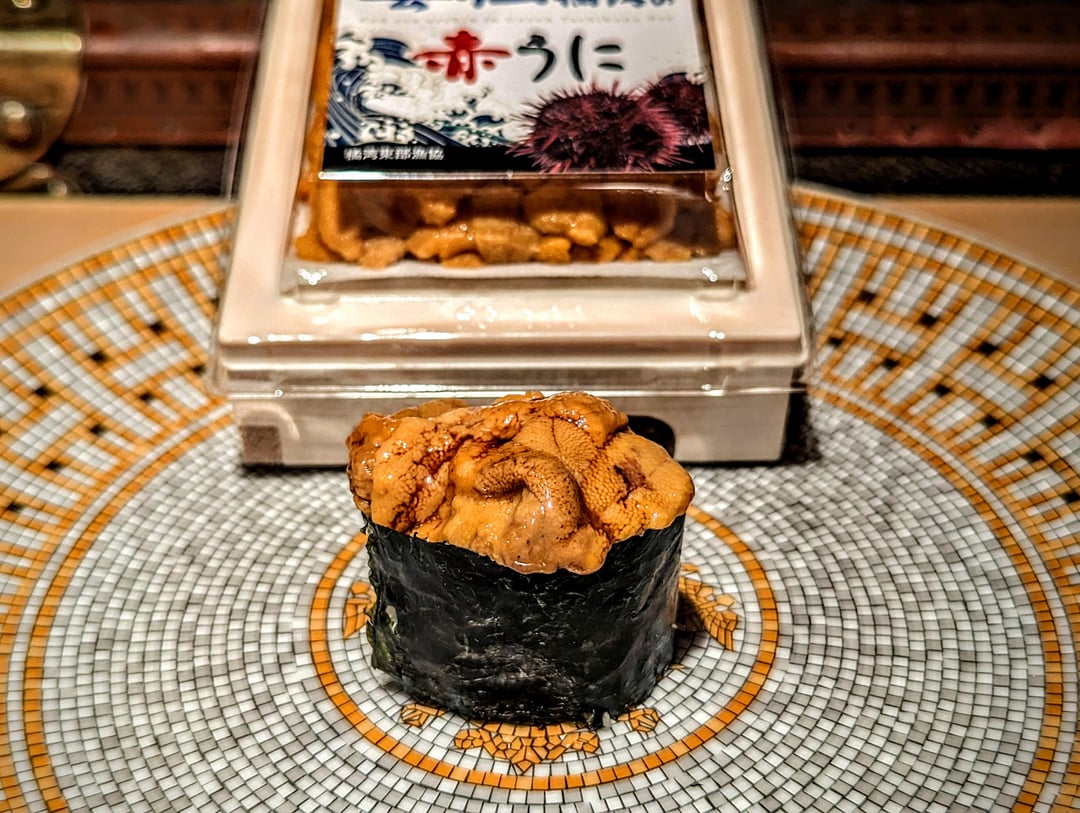
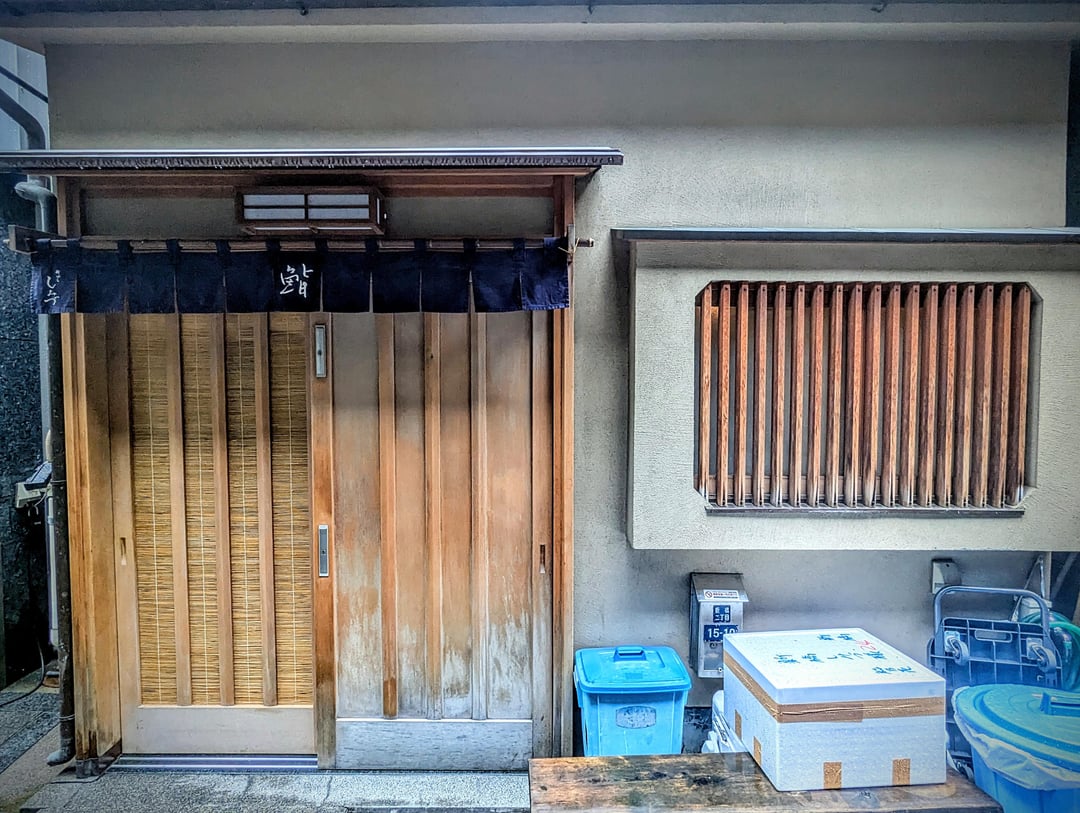


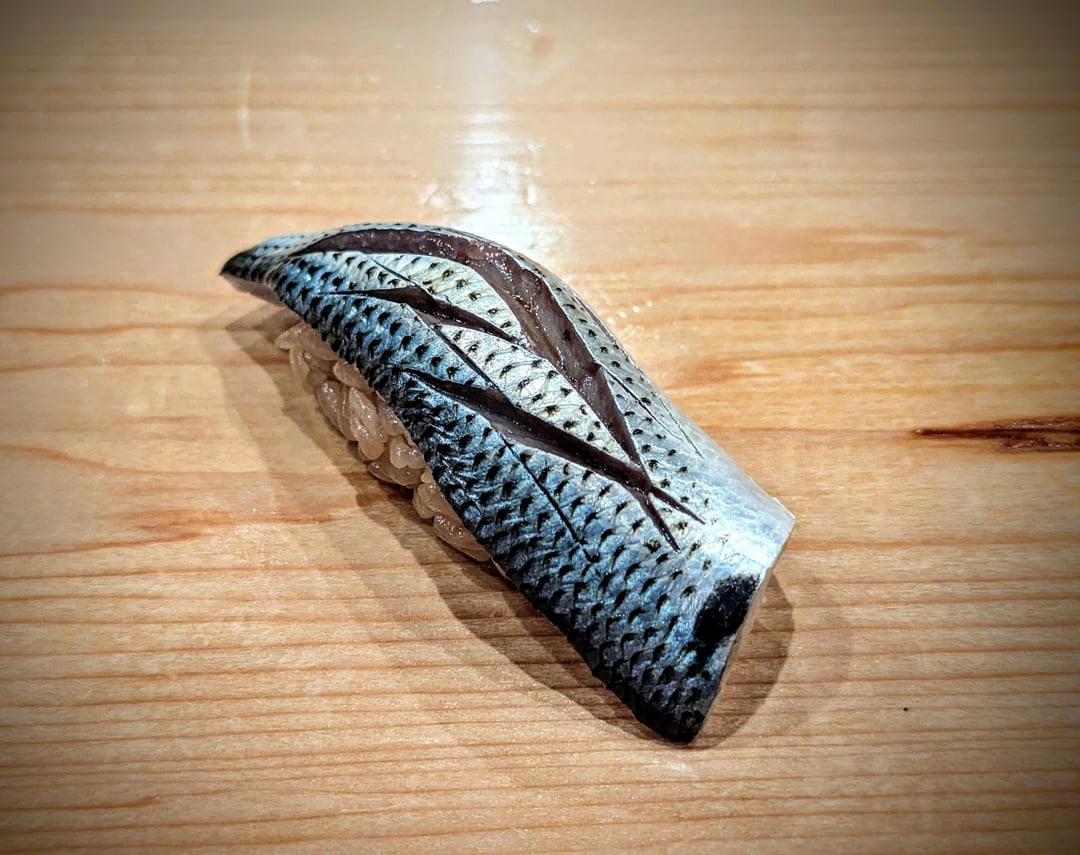
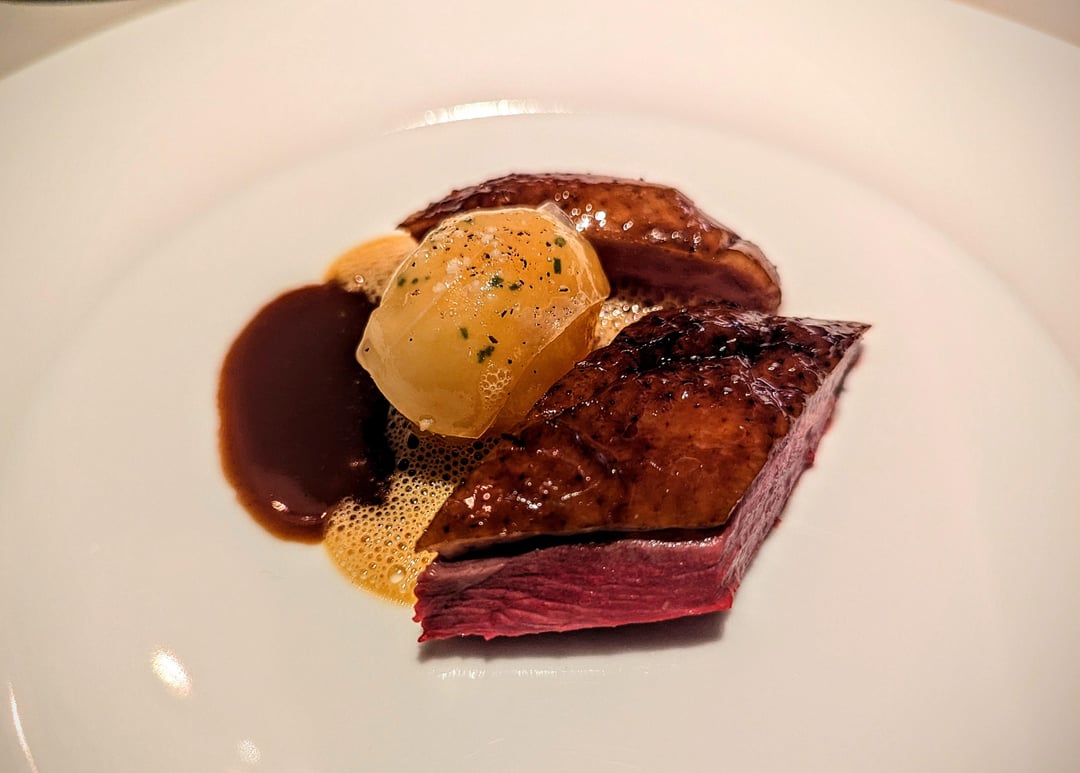
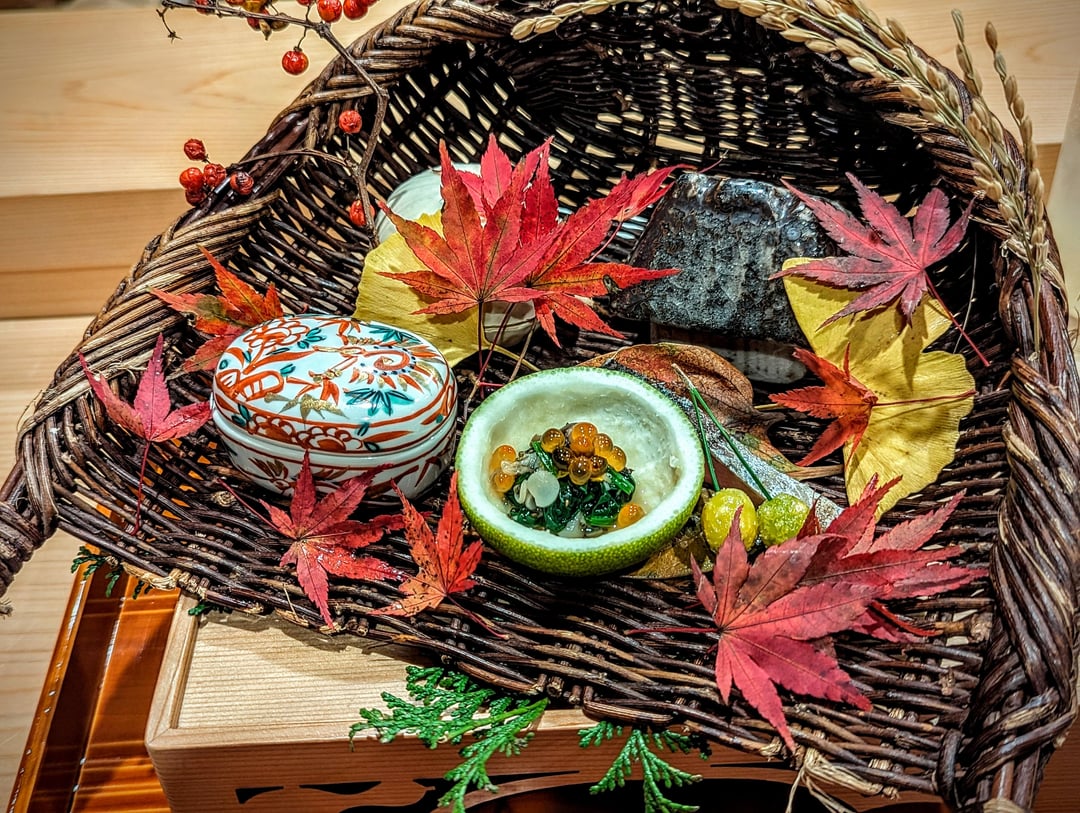

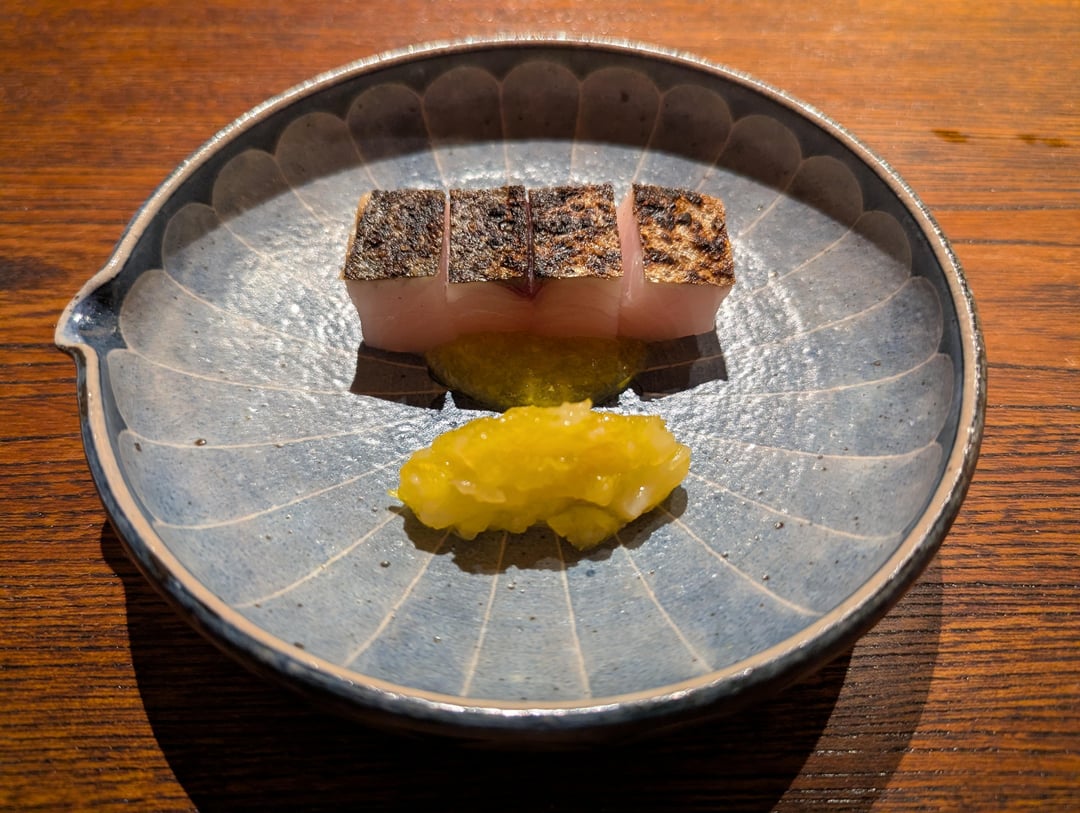
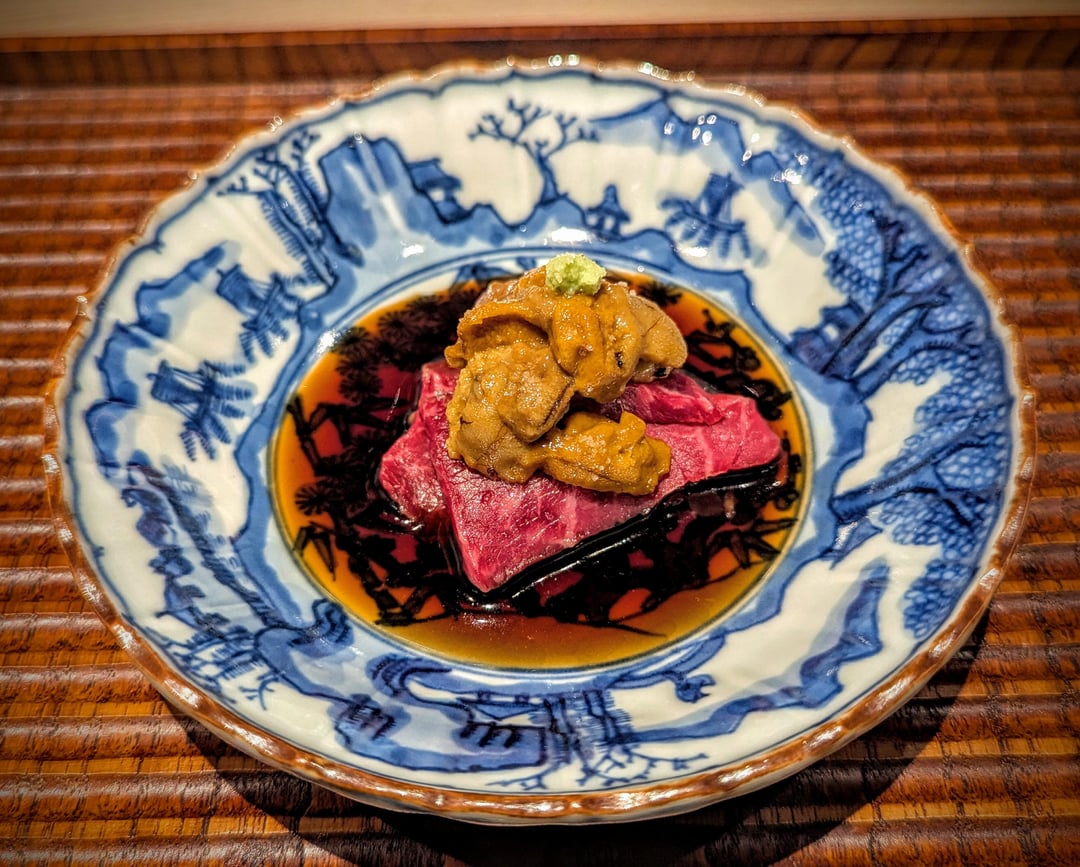

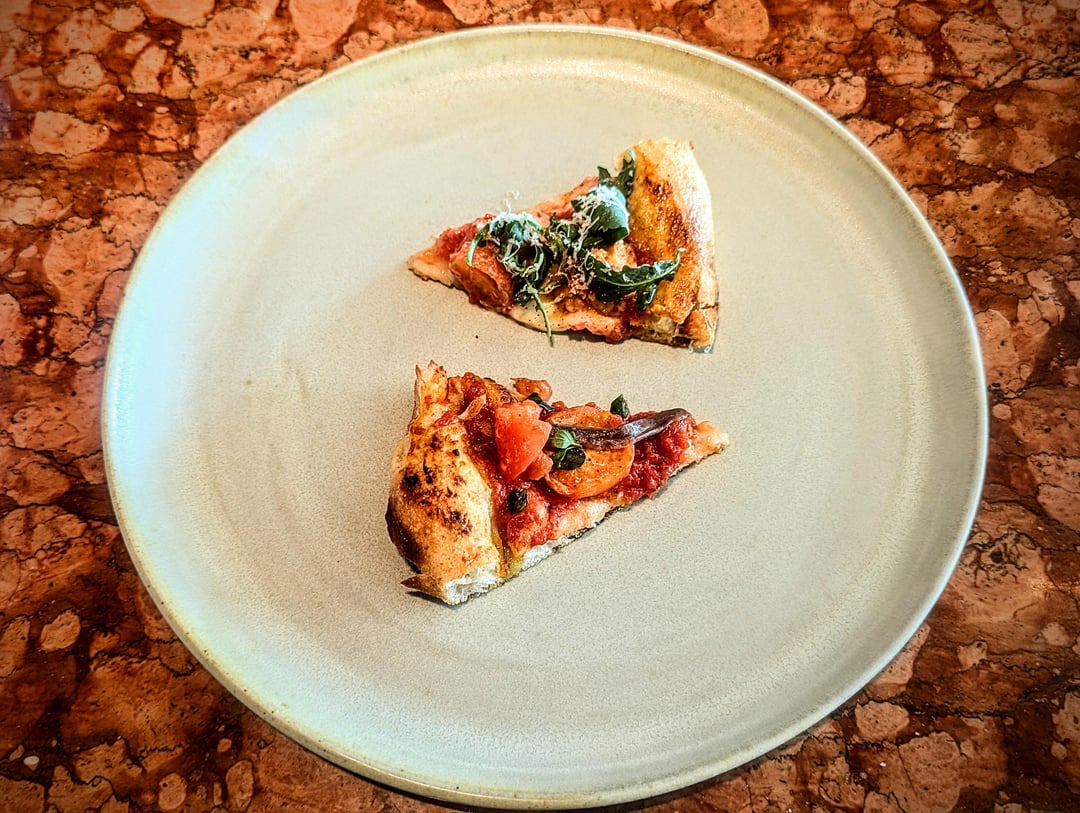
I am sure that formatting is going to fail me here, so bear with me…
I have spent the last two weeks in Tokyo (having visited Japan previously), where I set out to try many of the finest restaurants that the city has to offer (at least, according to Tabelog). My primary focus was sushi, given that it is my favourite cuisine, and therein I had the great fortune to dine at seven Tokyo sushiyas (one Tabelog bronze award, five silver awards, one gold award). In addition, I dined at two kaisekis (both silver awards), two French restaurants (one with a silver award), a bronze award tonkatsu, and a pizza omakase, in addition to many ramen restaurants and a couple of places that specialize in Japanese curry. For this post, I will give a short summary of each, and may go on to do a full write-up of some (if not all) of the high-end restaurants that I visited; also considering to do one for The Pizza Bar on 38th, so let me know if that could be of interest. I give the Tabelog ratings and awards, as well as the number of Michelin stars awarded to each restaurant, though the order in which I give them depends on the cuisine, and which rating holds more weight. At the end, I will also give my overall ranking. Pictures from each fine dining restaurant are given in the order that I write about them below, one from each, as well as pictures from Tonkatsu Narikura and The Pizza Bar on 38th.
Sushi:
There were no sub-par experiences to be had. 5 of these sushiyas have made my restaurant top 10. So when I say that, for instance, I didn't enjoy Sushi Nanba Hibiya quite as much as I did others, I should stress that I still found it to be excellent.
- Sushi Mizukami (4.24, Bronze award) – An early highlight, exceptional nigiri (including kohada, chutoro, hard clam, unagi, and mantis shrimp; the shari veering toward the acidic) with some nicely-accented otsumami, such as shirako. Booked through Tableall, with Nesaki-san serving myself and two other foreigners of the eight-seat counter. Highly recommend for a traditional sushi experience.
- Sushi Nanba Hibiya (4.51, Silver award) – Sat at the four-seat private counter (bookings release roughly a few days in advance through Tableall), Nanba-san serves an array of light otsumami (which includes whale), in addition to fifteen nigiri where the temperature of the Shari is carefully controlled, to the degree centigrade. Anago, halfbeak, hen-clam, chuo mackerel, chutoro and abalone all make an appearance. I loved the variety on display, but feel that the cuts were eclipsed by those at other restaurants on my trip. Still, would recommend.
- Sushi Takamitsu (4.47, Silver award) – 10 seats, with a predominantly foreign crowd, Sushi Takamitsu is the rowdiest of the sushiyas I visited. According to a guest I dined with at Sawada, who visited Sushi Takamitsu when he was just starting out, things have changed a lot in the interim, now attracting "a certain crowd". This is definitely the case, but your mileage may vary; at any rate, something to be aware of when booking (at least if going through Tableall, as I did). Despite this, the food offered at Sushi Takamitsu is incredible, as is his and his staff's hospitality. Uni appears frequently through the course of a sitting, with various types coming from Hokkaido and Kyushu (Takamitsu-san is a devotee of uni, and broke the record for the highest bid on uni in Japan earlier in the year). However, there is much more here besides uni; exquisite cuts of tuna, sea bream, mackerel, and gratis shots of some not inexpensive Clase Azul tequila and Yamazaki 18 year whisky. The best that I visited besides Sawada.
- Shimbashi Shimizu (4.29, Silver award) – No photos at this small sushiya tucked away down an alley next to a shrine in shimbashi. I went for the nigiri lunch, booked through Autoreserve, with the nigiri being on-par with that provided at Sushi Mizukami (though the Shari was less acidic). A mix of foreigners and locals, service was polite and expedient. Once again, another excellent sushi experience.
- Sushi Akira (4.45, Silver award) – Booked through Tableall, this was a seating comprised entirely of foreigners. Young sushi chefs clearly explained the fish and their sourcing, with the unicorn leatherjacket filefish and the anago that was presented similar to tamago being particular highlights. I preferred most of the other sushiyas to this, but still felt there was enough of a difference in approaches and sourcing to make this visit very much worthwhile.
- Sawada (4.52, Gold award) – The clear winner, I booked the nigiri lunch (consisting of 20+ pieces, and finishing with hosomaki made to order) the day before on omakase. A husband and wife team, Sawada is a shrine to sushi. The most perfect cuts of tuna I've tasted, unagi, Japanese tiger prawn, sardine, kohada, mantis shrimp, clams, horse mackerel, and more besides. Every cut of fish that I had previous to this reached its pinnacle here. A must-visit.
- Sushi Shunsuke (4.28, Silver award) – Booked through Tableall, this was my least favourite of the sushiyas I visited, as I found the shari to be rather bland. Still, the fish – especially the tuna – was of a high quality, the otsumami featured fried tofo (a personal favourite) and steamed snails that did not appear on other menus, and the service was attentive.
Other fine dining:
- SÉZANNE (French cuisine; 3* Michelin, 4.47 Tabelog, Silver award) – Enquired directly with the restaurant, then booked through omakase. I found this to be a mid-tier Michelin 3* (on par with somewhere like Hélène Darroze at The Connaught), with every dish executed well but few truly standing out. The duck course was exceptional, while in the days that followed the meal I struggled to recall much else without referring to the menu.
- Ginza Kitagawa (Kaeseki cuisine; 4.35 Tabelog, Silver award. 1* Michelin) – I was surprised at just how much I enjoyed this meal, with only Sawada eclipsing it. Dishes leaned on the freshest produce, where flavours were clear and pronounced. Uni with maitake mushroom, tempura red bell pepper, deep-fried fugu, soba with dried shrimp, wagyu above A5 grade, and a huge onigiri to round out the meal made for an evening to remember. Booked through omakase.
- Florilège (French cuisine; 2* Michelin. 4.28 Tabelog) – Booked through Tablecheck, I preferred this meal to the other French restaurant I visited, SÉZANNE. Cheese from Hokkaido featured multiple times on the menu, and each dish was a nice fusion of Japanese and French styles (such as the dish of beetroot with ikura, and potato with shirako). Standouts included the main course of chicken from Miyazaki prefecture, and the eggplant raviolo, the ravioli being made similar to udon noodles.
- Myoujyaku (Kaeseki cuisine; Tabelog 4.40, Silver award. Michelin 3*) – Where kaeseki cuisine tends to incorporate dashi to a great extent, at Myoujyaku the focus is not on dashi but on water, sourced from Miyazu Bay in Kyoto. Here then, the ingredients that are presented are being tasted au naturel (with often nothing in the way of additional seasoning beyond the water that they have been steeped in). A very interesting experience where great dedication has gone into sourcing and a lightness of touch in creating the dishes, though not one I would be as eager to return to as much as many of the other restaurants visited. Booked through Tableall.
- Nikuya Tanaka Ginza (Kappo cuisine; Tabelog 4.44, Silver award) – A meal focused on beef, with numerous cuts of Speciality Matsusaka breed cattle. Of particular note were the tenderloin and the "shabu-shabu", as well as the melon dessert from Shizuoka prefecture. Though enjoyable, no bite of beef could better that provided at Ginza Kitagawa. Despite this, it was still a very good meal.
Fine dining Restaurant ranking:
- Sawada
- Ginza Kitagawa
- Sushi Takamitsu
- Sushi Mizukami
- Shimbashi Shimizu
- Sushi Nanba Hibiya
- Sushi Akira
- Sushi Shunsuke
- Florilège
- Myoujyaku
- SÉZANNE
- Nikuya Tanaka Ginza
Casual dining:
- Jotou Curry Shibuya Honten (3.29) – An excellent Japanese curry can be found here, where the curry is fruity but also distinctly peppery. That spiciness is welcome, particularly on the rainy morning that I had it. Much better than the GoGo Curry chain. Recommended!
- Tonkatsu Narikura (4.25, Bronze Award) – Definitely the best pork I've had to date. Incredibly tender and juicy, with the almost tempura-like batter, light and crispy, making for the perfect casing. Highly recommended!
- Raa Menya Shima (4.02) – I went for the shoyu ramen, which was topped with the most succulent chashu, an incredibly gooey boiled egg, a slice of nori, and wontons nestled among the ramen. I prefer more intense soup broths (such as tonkotsu ramen), but this was an excellent shoyu ramen. Booked through Tablecheck. Recommended!
- Ramen Afro Beats (3.73) – Another shoyu ramen, this one with diced red onion, paprika (foamed and in ground form), pork and soft-boiled eggs. The red onion gave some nice textural variety, and I liked the addition of paprika, particularly in foamed form. While unique, it's not a bowl that I would be running back to, given the lightness of the broth.
- Japanese Ramen Gokan (3.97) – Booked through Tablecheck the Sunday before, I had the shoyu ramen from this counter in Ikebukuro. Wontons, chashu, nori, and slightly chewy noodles completed this ramen, with the broth being lighter than the one at Raa Menya Shima. A solid bowl, though I preferred the shoyu ramen from the aforementioned.
- Tonkatsu.jp (3.72) – This tonkatsu restaurant has a wide variety of pork on offer, and I was able to grab a seat (didn't have to wait long at all, though there was a line when I left) at the lunchtime service. I had the Schwabisch Hall pork loin meal, the pork coming from the El Paso Pig Ranch in Hokkaido. Though not as tender as what Tonkatsu Narikura offers, this was still a good meal, with the fat of the pork near glistening, and free refills of rice and miso soup welcome.
- Mensho Tokyo (3.69) – The Bunkyo outpost of Menya Shono, I went for the tonkotsu ramen with lamb and wagyu. The broth was very satisfying, and my personal favourite of those I tried during this trip. The toppings, however, fell short. If I could take the chashu from Raa Menya Shima and marry this to Mensho Tokyo's pork broth, then it'd be a clear winner. Recommended!
- The Pizza Bar on 38th (4.16) – Booked through the Mandarin Oriental restaurant's website as soon as reservations opened up, I had the lunch omakase at Pizza Bar on 38th, consisting of two appetizers, six slices, and a dessert. The pizzas were almost universally excellent, with the highlights being the marinara (perhaps the best tomato-base pizza in the neapolitan tradition that I've had), and the seasonal prawn with dill and pistachios. Pricy for pizza, but this is exacting pizza making. Highly recommended!
- Curry Bondy (3.69) – A decent curry with a nice level of spice, but I much prefer the curry at Jotou (probably because it is more of a Japanese curry than that found at Curry Bondy). In addition, the chicken was a little stringy. Can't complain too much for 1700 JPY, but I'd take Jotou Curry any day.
- Isen Honten (3.54) – I got a walk-in on opening at this Tonkatsu restaurant in Ueno, electing for the pork loin set menu, consisting of breaded and fried pork loin, cabbage, pickles and miso soup. The pork loin was juicy, and the miso soup was greatly enjoyable; I think that it was made with peanut oil, such was the flavour. Recommended!
- Tonki (3.59) – Another walk-in, this one to the Komagome branch of Tonki, for fillet tonkatsu with rice, pickles and miso soup. My least favourite of the four tonkatsu places that I tried, the batter was denser than those at the other places, and the fillet itself didn't have the same level of tenderness (despite being a naturally more tender cut than loin) as the pork offered at the other restaurants.
- Ramen Jiro Meguro Ten (3.73) – A huge pile of beansprouts and cabbage sits atop thick, chewy noodles in a shoyu-tonkotsu mix broth. Complete with chashu, this ramen bowl was easily the most voluminous I had. With more of an onus on the noodles and toppings, the broth was lacking when compared with the other ramen bowls that I had this trip. If you have quite the hunger though, I imagine a bowl here will easily sate it.
For ramen, there was no clear winner; each place offered something different, with all of them being preferable to the chain Ichiran. For tonkatsu, Tonkatsu Narikura all the way. Pizza Bar on 38th was exceptional, and of all the Japanese curries I tried, Jotou Curry was my favourite.
A big takeaway from all of this is that eating in Tokyo was nowhere near as arduous as eating at a fine dining restaurant per day in Europe (my Barcelona trip earlier in the year, for example, had me struggling with fatigue 3 days into the trip. This made me somewhat trepidatious for the Tokyo trip, given how much I had already booked). Perhaps a contributing factor is walking 15+ km per day, but more so the food is just a lot lighter than one gets from Western European cooking. I wouldn't hesitate to do something like this again, and probably will on future visits to Tokyo, and elsewhere in Japan.
by MaaDFoXX


4 Comments
Posted as comment, for formatting clarity.
Other fine dining:
1. SÉZANNE (French cuisine; 3* Michelin, 4.47 Tabelog, Silver award) – Enquired directly with the restaurant, then booked through omakase. I found this to be a mid-tier Michelin 3* (on par with somewhere like Hélène Darroze at The Connaught), with every dish executed well but few truly standing out. The duck course was exceptional, while in the days that followed the meal I struggled to recall much else without referring to the menu.
2. Ginza Kitagawa (Kaeseki cuisine; 4.35 Tabelog, Silver award. 1* Michelin) – I was surprised at just how much I enjoyed this meal, with only Sawada eclipsing it. Dishes leaned on the freshest produce, where flavours were clear and pronounced. Uni with maitake mushroom, tempura red bell pepper, deep-fried fugu, soba with dried shrimp, wagyu above A5 grade, and a huge onigiri to round out the meal made for an evening to remember. Booked through omakase.
3. Florilège (French cuisine; 2* Michelin. 4.28 Tabelog) – Booked through Tablecheck, I preferred this meal to the other French restaurant I visited, SÉZANNE. Cheese from Hokkaido featured multiple times on the menu, and each dish was a nice fusion of Japanese and French styles (such as the dish of beetroot with ikura, and potato with shirako). Standouts included the main course of chicken from Miyazaki prefecture, and the eggplant raviolo, the ravioli being made similar to udon noodles.
4. Myoujyaku (Kaeseki cuisine; Tabelog 4.40, Silver award. Michelin 3*) – Where kaeseki cuisine tends to incorporate dashi to a great extent, at Myoujyaku the focus is not on dashi but on water, sourced from Miyazu Bay in Kyoto. Here then, the ingredients that are presented are being tasted au naturel (with often nothing in the way of additional seasoning beyond the water that they have been steeped in). A very interesting experience where great dedication has gone into sourcing and a lightness of touch in creating the dishes, though not one I would be as eager to return to as much as many of the other restaurants visited. Booked through Tableall.
5. Nikuya Tanaka Ginza (Kappo cuisine; Tabelog 4.44, Silver award) – A meal focused on beef, with numerous cuts of Speciality Matsusaka breed cattle. Of particular note were the tenderloin and the “shabu-shabu”, as well as the melon dessert from Shizuoka prefecture. Though enjoyable, no bite of beef could better that provided at Ginza Kitagawa. Despite this, it was still a very good meal.
Posted as comment, for formatting clarity.
Casual dining:
1. Jotou Curry Shibuya Honten (3.29) – An excellent Japanese curry can be found here, where the curry is fruity but also distinctly peppery. That spiciness is welcome, particularly on the rainy morning that I had it. Much better than the GoGo Curry chain. Recommended!
2. Tonkatsu Narikura (4.25, Bronze Award) – Definitely the best pork I’ve had to date. Incredibly tender and juicy, with the almost tempura-like batter, light and crispy, making for the perfect casing. Highly recommended!
3. Raa Menya Shima (4.02) – I went for the shoyu ramen, which was topped with the most succulent chashu, an incredibly gooey boiled egg, a slice of nori, and wontons nestled among the ramen. I prefer more intense soup broths (such as tonkotsu ramen), but this was an excellent shoyu ramen. Booked through Tablecheck. Recommended!
4. Ramen Afro Beats (3.73) – Another shoyu ramen, this one with diced red onion, paprika (foamed and in ground form), pork and soft-boiled eggs. The red onion gave some nice textural variety, and I liked the addition of paprika, particularly in foamed form. While unique, it’s not a bowl that I would be running back to, given the lightness of the broth.
5. Japanese Ramen Gokan (3.97) – Booked through Tablecheck the Sunday before, I had the shoyu ramen from this counter in Ikebukuro. Wontons, chashu, nori, and slightly chewy noodles completed this ramen, with the broth being lighter than the one at Raa Menya Shima. A solid bowl, though I preferred the shoyu ramen from the aforementioned.
6. Tonkatsu.jp (3.72) – This tonkatsu restaurant has a wide variety of pork on offer, and I was able to grab a seat (didn’t have to wait long at all, though there was a line when I left) at the lunchtime service. I had the Schwabisch Hall pork loin meal, the pork coming from the El Paso Pig Ranch in Hokkaido. Though not as tender as what Tonkatsu Narikura offers, this was still a good meal, with the fat of the pork near glistening, and free refills of rice and miso soup welcome.
7. Mensho Tokyo (3.69) – The Bunkyo outpost of Menya Shono, I went for the tonkotsu ramen with lamb and wagyu. The broth was very satisfying, and my personal favourite of those I tried during this trip. The toppings, however, fell short. If I could take the chashu from Raa Menya Shima and marry this to Mensho Tokyo’s pork broth, then it’d be a clear winner. Recommended!
8. The Pizza Bar on 38th (4.16) – Booked through the Mandarin Oriental restaurant’s website as soon as reservations opened up, I had the lunch omakase at Pizza Bar on 38th, consisting of two appetizers, six slices, and a dessert. The pizzas were almost universally excellent, with the highlights being the marinara (perhaps the best tomato-base pizza in the neapolitan tradition that I’ve had), and the seasonal prawn with dill and pistachios. Pricy for pizza, but this is exacting pizza making. Highly recommended!
9. Curry Bondy (3.69) – A decent curry with a nice level of spice, but I much prefer the curry at Jotou (probably because it is more of a Japanese curry than that found at Curry Bondy). In addition, the chicken was a little stringy. Can’t complain too much for 1700 JPY, but I’d take Jotou Curry any day.
10. Isen Honten (3.54) – I got a walk-in on opening at this Tonkatsu restaurant in Ueno, electing for the pork loin set menu, consisting of breaded and fried pork loin, cabbage, pickles and miso soup. The pork loin was juicy, and the miso soup was greatly enjoyable; I think that it was made with peanut oil, such was the flavour. Recommended!
11. Tonki (3.59) – Another walk-in, this one to the Komagome branch of Tonki, for fillet tonkatsu with rice, pickles and miso soup. My least favourite of the four tonkatsu places that I tried, the batter was denser than those at the other places, and the fillet itself didn’t have the same level of tenderness (despite being a naturally more tender cut than loin) as the pork offered at the other restaurants.
12. Ramen Jiro Meguro Ten (3.73) – A huge pile of beansprouts and cabbage sits atop thick, chewy noodles in a shoyu-tonkotsu mix broth. Complete with chashu, this ramen bowl was easily the most voluminous I had. With more of an onus on the noodles and toppings, the broth was lacking when compared with the other ramen bowls that I had this trip. If you have quite the hunger though, I imagine a bowl here will easily sate it.
I second Sawada, also had the nigiri lunch menu and it was unbelievable. On the seating there was a sous chef from Sushi Noz in NYC who also agreed it was incredible.
Awesome writeup. Thanks, OP.